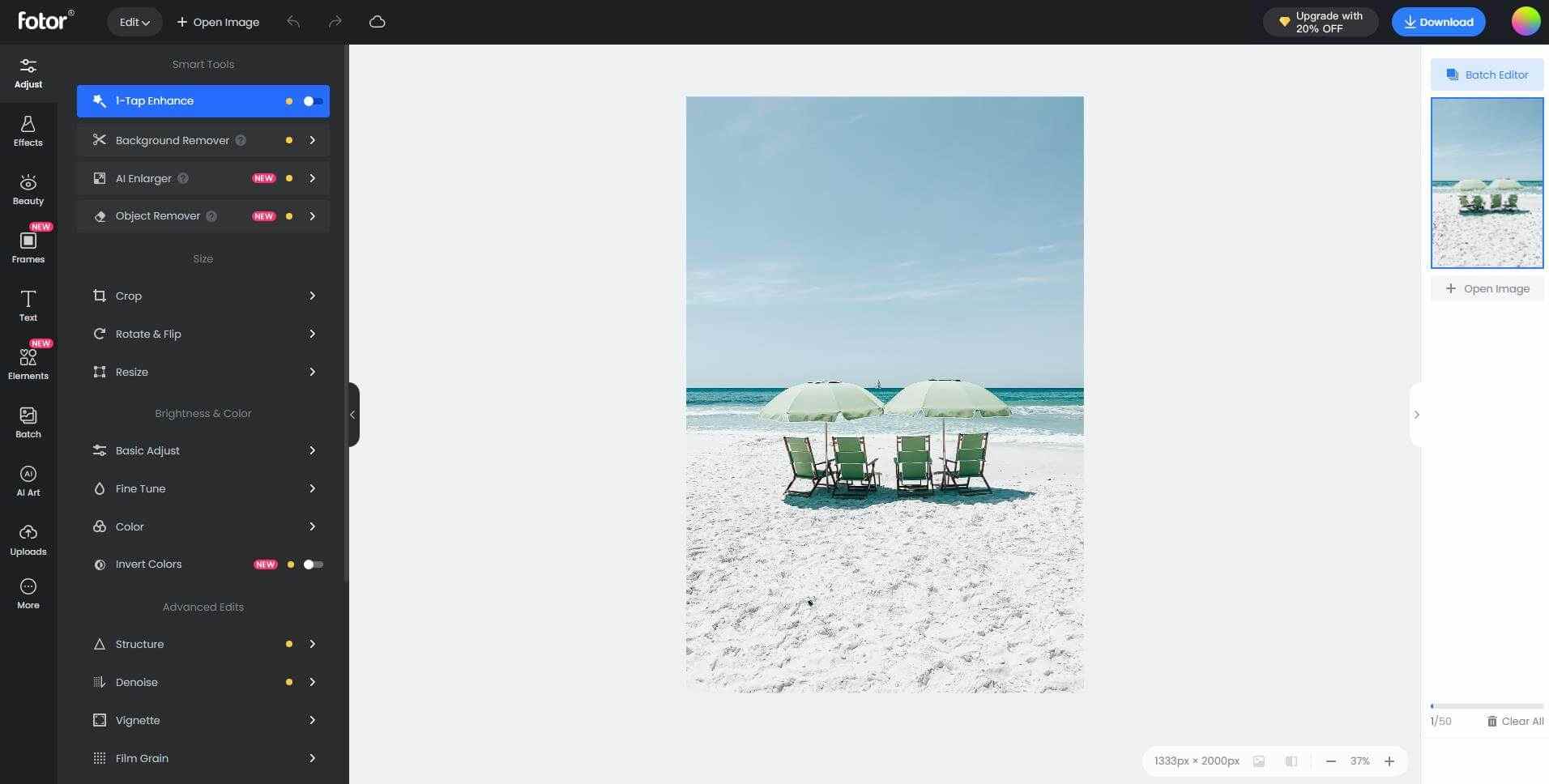Fotor: Complete Buyer's Guide
Accessible AI pattern generator with granular style control
Fotor positions itself as an accessible AI pattern generator that transforms text prompts into production-ready SVG patterns with granular style control and direct editor integration.
Market Position & Maturity
Market Standing
Fotor operates from a #3 market ranking in AIArtKingdom's pattern generator rankings [213].
Company Maturity
AWS infrastructure foundation serving 600M+ global users [223].
Industry Recognition
AWS infrastructure validation [223].
Longevity Assessment
AWS foundation and established user base provide stability indicators despite non-dominant market ranking.
Proof of Capabilities
Customer Evidence
E-commerce brands achieving improved campaign performance through Fotor-generated packaging designs, with measurable 38% higher CTR in LinkedIn campaigns [26][42].
Quantified Outcomes
50-60% time reduction in pattern creation [213][225].
Market Validation
Platform's #3 ranking in pattern generator market [213] combined with 600M+ global user base [223].
Competitive Wins
Fotor demonstrates broader e-commerce applications compared to Patterned.ai and real-time customization capabilities that distinguish from Canva's template-driven approach [211][214][217].
AI Technology
Fotor's AI technology centers on text-to-SVG pattern generation with comprehensive style parameter control [211][213].
Architecture
AWS infrastructure supporting 300+ concurrent requests per second [223].
Primary Competitors
Patterned.ai, Canva, and Adobe Firefly [213].
Competitive Advantages
Real-time style and shadow customization [211][214][217].
Market Positioning
Middle-ground positioning between accessibility and enterprise capability.
Win/Loss Scenarios
Fotor wins when organizations prioritize cost-effectiveness, rapid implementation, and moderate volume requirements [223][225].
Key Features

Pros & Cons
Use Cases
Pricing
Featured In Articles
Comprehensive analysis of AI Pattern Generators for AI Design for AI Design professionals. Expert evaluation of features, pricing, and implementation.
How We Researched This Guide
About This Guide: This comprehensive analysis is based on extensive competitive intelligence and real-world implementation data from leading AI vendors. StayModern updates this guide quarterly to reflect market developments and vendor performance changes.
229+ verified sources per analysis including official documentation, customer reviews, analyst reports, and industry publications.
- • Vendor documentation & whitepapers
- • Customer testimonials & case studies
- • Third-party analyst assessments
- • Industry benchmarking reports
Standardized assessment framework across 8 key dimensions for objective comparison.
- • Technology capabilities & architecture
- • Market position & customer evidence
- • Implementation experience & support
- • Pricing value & competitive position
Research is refreshed every 90 days to capture market changes and new vendor capabilities.
- • New product releases & features
- • Market positioning changes
- • Customer feedback integration
- • Competitive landscape shifts
Every claim is source-linked with direct citations to original materials for verification.
- • Clickable citation links
- • Original source attribution
- • Date stamps for currency
- • Quality score validation
Analysis follows systematic research protocols with consistent evaluation frameworks.
- • Standardized assessment criteria
- • Multi-source verification process
- • Consistent evaluation methodology
- • Quality assurance protocols
Buyer-focused analysis with transparent methodology and factual accuracy commitment.
- • Objective comparative analysis
- • Transparent research methodology
- • Factual accuracy commitment
- • Continuous quality improvement
Quality Commitment: If you find any inaccuracies in our analysis on this page, please contact us at research@staymodern.ai. We're committed to maintaining the highest standards of research integrity and will investigate and correct any issues promptly.